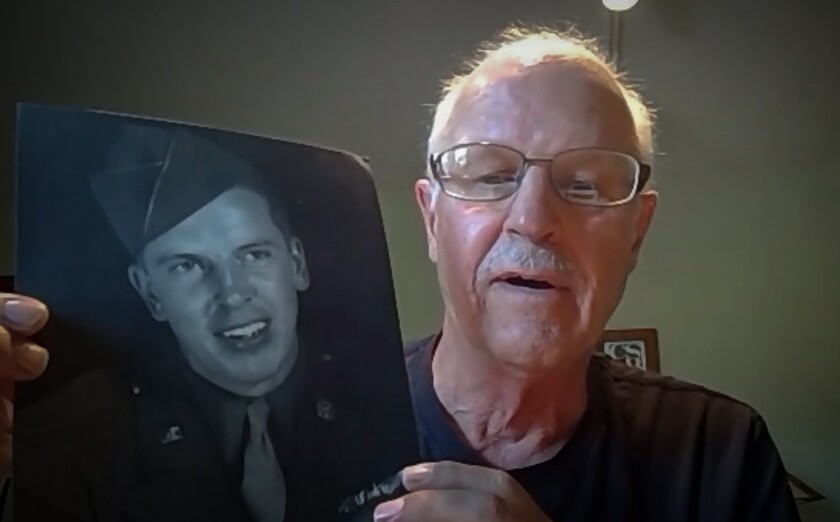ROCHESTER — It’s been 141 years since an estimated EF5 tornado tore through Rochester destroying more than 135 homes and killing dozens of people.
People familiar with Rochester’s history know of the tornado, which struck the evening of Aug. 21, 1883, and the series of events that led to establishing a hospital in Rochester that would become Mayo Clinic.
ADVERTISEMENT
Dr. William Mayo and his sons, William and Charles, cared for the casualties of the tornado. Afterward, Mother Mary Alfred Moes implored the doctors to establish a hospital in Rochester. Together, they founded Saint Marys Hospital, giving rise to the Mayo Clinic.
What is often left out is the story of the Lowertown Neighborhood that bore the brunt of the damage and the casualties.
“We are and have been a working-class, blue-collar neighborhood,” said . “A lot of our history hasn’t been documented and memorialized.”
Zastrow has been working to collect some of the stories of survivors and victims in what was then the Northern Addition to Rochester. The north side of Rochester and the Northern Addition — later nicknamed “Lowertown” — were hit the hardest by the tornado.
“We haven’t been able to preserve our legacy as much as things that have Mayo’s name attached to it,” Zastrow said.
A National Weather Service historical summary of the tornado acknowledges the demographics of the people affected most by the storm.
“All of the dwelling houses destroyed were occupied and owned by people in moderate circumstances, principally laborers, who lost everything they owned,” the .
ADVERTISEMENT
“Neighbors literally had to crawl out from under the rubble and help each other in the aftermath,” Zastrow said.
In addition to researching the tornado, Lowertown Neighborhood Association board members have been holding commemorations of the tornado since 2022. The 2024 event is scheduled for Saturday, Aug. 10 in the west lot of Silver Lake Park. That’s the site of the former Cole’s Mill that was damaged in the tornado. John Cole, owner of the mill, was killed when he was caught outside during the storm walking from the mill toward home.
Many of the photographs taken of the damage were captured from the upper levels of the mill. Zastrow has scoured records and photos documenting the devastation. One of the photos looking west from the mill shows debris from ruined homes and bare trees with only a few damaged buildings still standing — most without roofs.
However, one building, along what was called Fremont Street, which is now Ninth Street, remains more or less intact. The home has a distinctive but modest two-story, west-facing bedroom tower.
Zastrow, curious about the fate of the intact house, looked on the first block of Ninth Street Northeast and found a house strikingly similar at the same spot.
“I’m convinced, and a number of board members are convinced, that’s the house from the photo,” Zastrow said. “It sure lines up right and it sure looks like the building that sits there today.”

County records show the building was constructed in 1930. However, the Queen Anne details such as the tower and the two-over-two windows on the south-facing wall indicate the building is likely older than depression era construction.
ADVERTISEMENT
Although there aren’t many landmarks in the photos, knowing where most were taken from, paired with the topography of the north side of the city makes lining the views up easier, Zastrow said.
“The Lowertown photos are great because you have the bluffs for orientation,” he said.
The Heritage House, now relocated in Central Park in downtown, was spared destruction in the storm.
A tree at the 500-block of Fifth Avenue Northwest is also believed to be a Lowertown survivor of the tornado. Olmsted County Commissioner Laurel Podulke Smith pointed out the standing tree to the neighborhood association.
The damage was not limited to the north end of town. According to accounts from the National Weather Service, nearly every business building on Broadway Avenue had their tin roofs blown off. George Stockings' new brick grocery store on the corner of Fourth and Broadway was demolished as were its contents.
A sturdy brick building, Rommel Hall, on Broadway Avenue at what is now First Street Southeast, survived intact. It served as a temporary emergency room for Dr. William Mayo and his two sons to treat people injured in the storm.
A portion of that building still stands on the west side of Broadway Avenue. It was part of the former Michael’s Restaurant and is slated to be demolished. Most of the rest of the building was demolished to make way for the University of Minnesota Rochester Galleria.
ADVERTISEMENT
Leading up to the August commemoration, Zastrow said he and other neighborhood association members will continue to look for the information and stories about the people who went through the violent storm.
“I think it’s important to learn about those stories,” Zastrow said. “How do we fit into this grand story that’s the fabric of this town?”























